About the Project
The conservation of diadromous fish populations depends upon the implementation of management actions that are spatial and temporal representative of the ecological needs of these species. Because freshwater, estuarine and coastal habitats are administrated by different governmental agencies, often belonging to different ministries, the application of an integrated management plan is particularly difficult, especially when it involves changes in fisheries regulations, rehabilitation of habitats and poaching eradication.
The project Habitat restoration for diadromous fish in River Mondego (2013-15), with a budget of ca 1.3M euros, was coordinated by the University of Évora with the technical-scientific advice of MARE - Marine and Environmental Sciences Centre, and it was funded by the Ministry of Agriculture and Sea, and cofunded by the European Fisheries Fund through PROMAR 2007-13.
The project has 11 institutional partners, namely the Portuguese Environment Agency (APA, I.P.), the Mora Freshwater Aquarium (FM), the Foundation of the Faculty of Sciences of the University of Lisbon (FFCUL), the Portuguese Sea and Atmosphere Institute (IPMA), the Energies from Portugal (EDP), the Portuguese Fishery Management Authority (DGRM), the Portuguese Institute for Nature Conservation and Forests (ICNF), the Sea Lamprey Brotherhood, and the municipalities of Penacova, Vila Nova de Poiares and Coimbra.
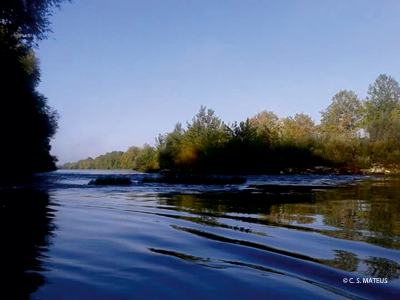 River Mondego. | 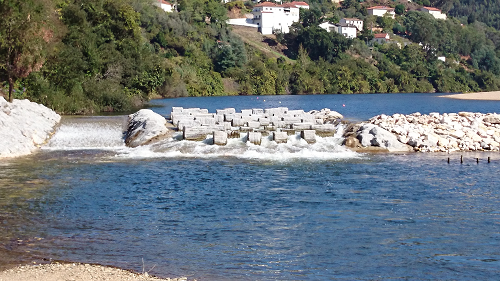 Palheiros weir: nature-like fish pass. |
The main goal of the project is the implementation of an integrated management approach that will ensure the compatibility between the conservation of the diadromous fish, and all the other water uses in this river basin, namely, hydroelectricity production, water abstraction (industry, agriculture and domestic), flood control, commercial fisheries and different recreational purposes (e.g., angling, kayaking).
In 2011, this project was boosted by the construction of the fish pass in the Coimbra Açude-Ponte dam, implemented by the Portuguese Environmental Agency. This enabled the migratory fish to surmount this impassable dam built in 1981. Habitat Restoration for diadromous fish in River Mondego continued the rehabilitation by building nature-like fish passes in other five weirs, four of which are located upstream from Açude-Ponte dam.
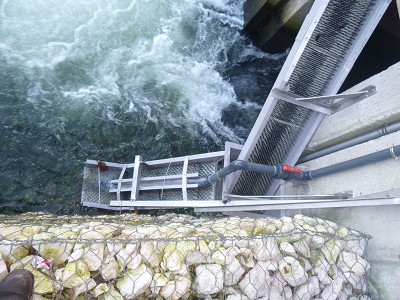 Eel pass (Açude-Ponte dam, Coimbra). | 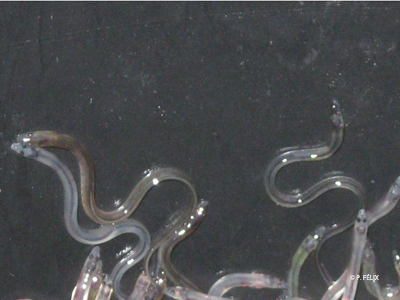 Glass eels. |
The construction of an eel pass was also one of the project actions, as well as restocking evaluation and monitoring of this species in river stretches with suitable habitat characteristics.
At the same time, the project aims to contribute to a sustainable fishery of sea lamprey, allis shad and twaite shad, by introducing a management scheme that links the administrative governmental agencies responsible for fisheries regulations in sea/estuaries and freshwater stretches, with commercial fishermen associations, with the concomitance and advice of scientific research institutions working with diadromous species.
Finally, restoration measures applied in River Mondego are being properly evaluated with a multiplicity of sampling techniques (e.g., radio/acoustic/PIT telemetry, electric fishing, video count at Açude-Ponte dam fish pass) that aim to assess the efficiency of the fish passes and accompany the abundancy of the target species before and after the construction of these infrastructures.
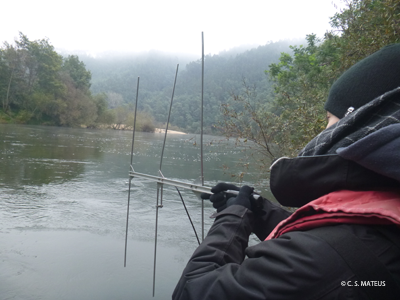 Radiotelemetry campaign in River Mondego. | 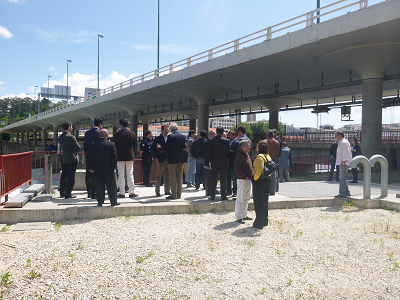 World Fish Migration Day (Coimbra, 2014). |
